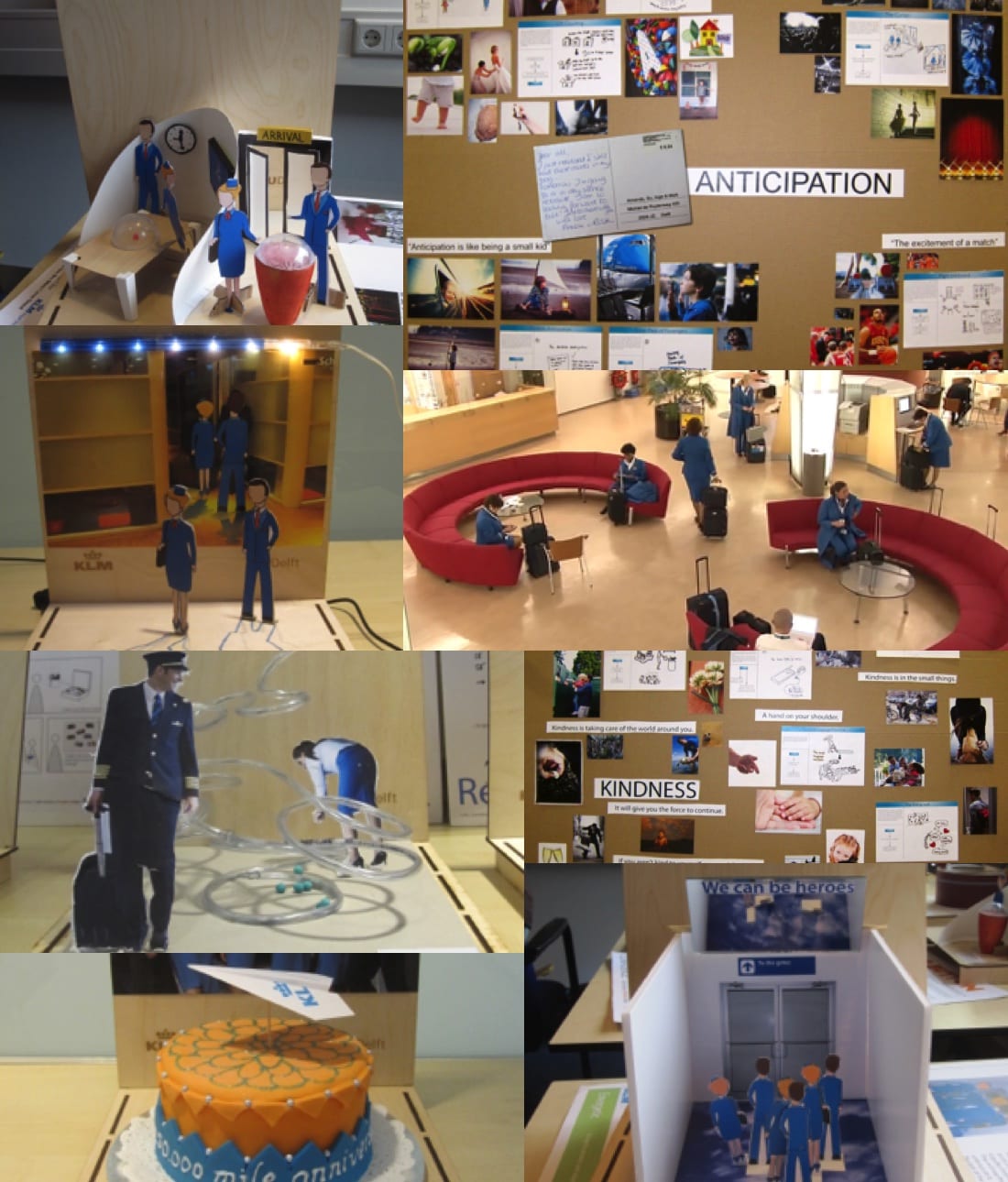
Research conducted in collaboration with KLM Royal Dutch Airlines (Amsterdam, the Netherlands)
Publication:
- Desmet, P. M. A. , Fokkinga, S.F., Ozkaramanli, D., & Yoon, J. (2016). Emotion-driven product design. In: H. L. Meiselman (Ed.). Emotion measurement (pp. 406-426). New York: Elsevier. Download
- Yoon, J., Pohlmeyer, A. E., & Desmet, P. M. A. (2014). The mood street: Designing for nuanced positive emotions (pp. 707–716). Presented at the NordiCHI, Helsinki, Finland: ACM. Download
The KLM Royal Dutch Airlines wanted to introduce products and services in the crew center that evoke positive emotions to improve the mood of flight attendants just before boarding the airplane. At the beginning of the project, 10 positive emotions were chosen to design for, which guided the design process: anticipation, confidence, energized, inspiration, joy, kindness, pride, relaxation, respect, and sympathy. For each emotion, several ideas were generated. Because the emotions differ in terms of causes and behavioral effects, with interviews, observations, and creative workshops, the designers explored when and why flight attendants experienced each of the 10 emotions, and how these emotions contributed to their professional activities. The gained insights were translated into a collection of 30 designed interventions, three for each emotion.
Two examples are “Good Night” and “The Curtain”, which were designed to evoke kindness and anticipation, respectively. Good Night is a smartphone application that enables team members to help each other to be on time when they have early flights. The application is aware of the schedule of a flight attendant and automatically sets the desired wake-up time for each team member. At wake-up time, the application gently reminds the team members to check who might still be asleep by showing each member’s state, and, if necessary, signaling to give them a friendly wake-up call. In this way, the flight attendants kindly look after each other and feel connected even before they meet. The Curtain intends to stimulate positive anticipation for the upcoming flight. As the flight attendants walk from the crew center towards the airport gate, the closed curtain slowly opens and lights around the curtain frame glow, one by one. When the lights are on, the curtain is completely open. This moment builds up a feeling of expectancy and signals that they are ready and prepared to go “on-stage.”